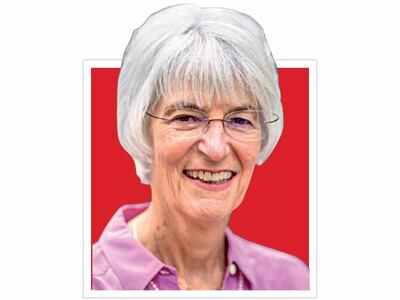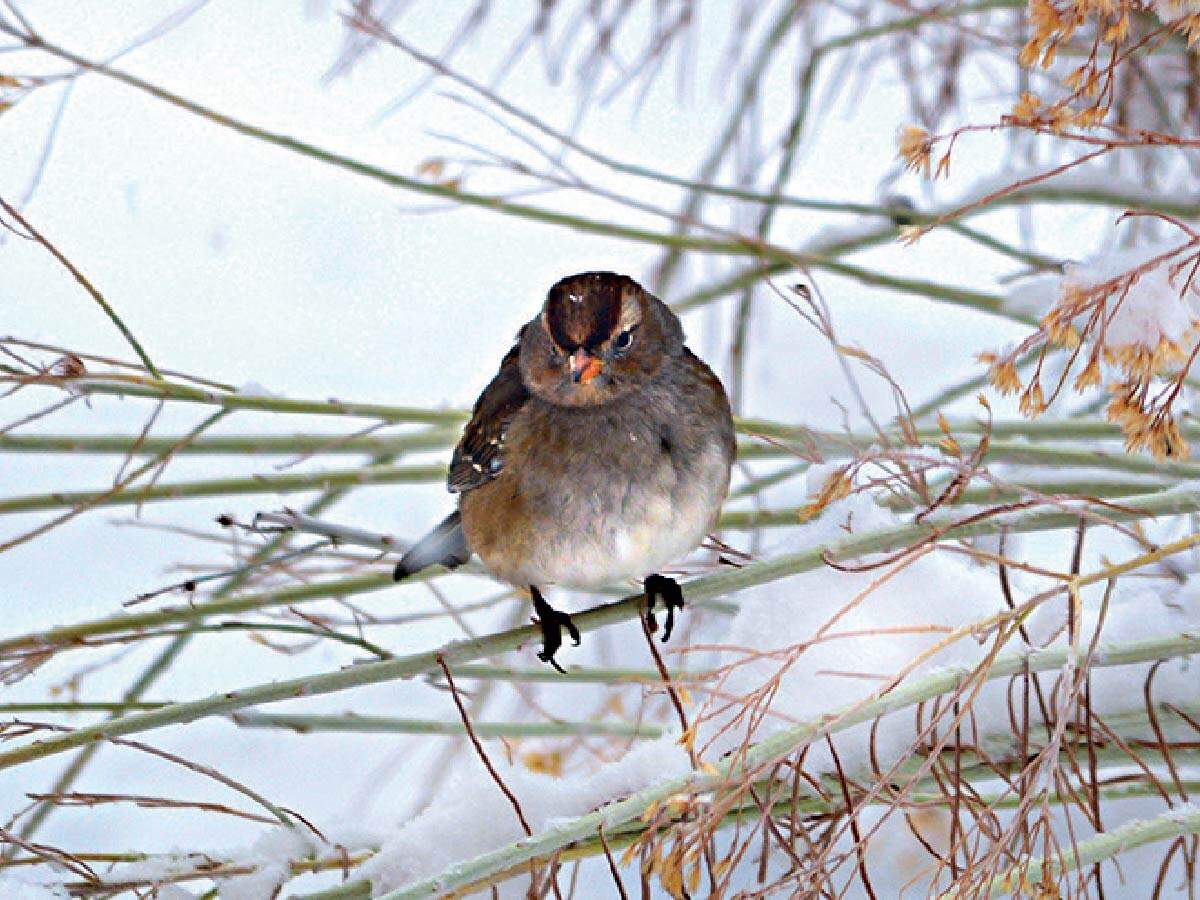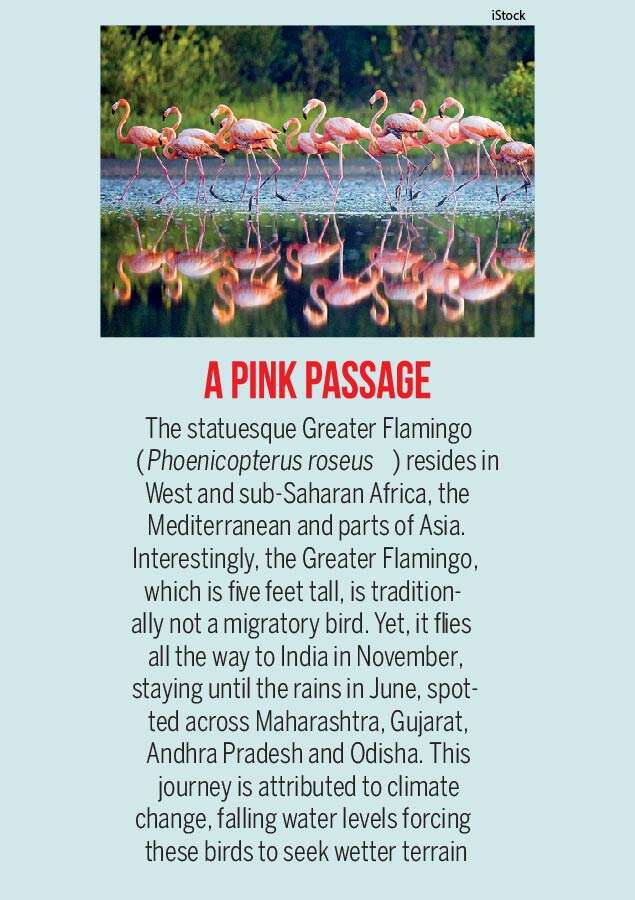
Marilyn Ramenofsky is emeritus adjunct professor of neurobiology, physiology and behaviour at the University of California, Davis. An eminent expert on avian migration, Ramenofsky spoke to Srijana Mitra Das at Times Evoke about why birds fly, how they guide their young — and how climate change is impacting their journeys:
Why do birds migrate?
Species migrate because resources are variable. Certain locations always have resources for nesting, food and protection against predators. That is predictability you can rely on. But as the Earth moved from an unseasonal, tropical environment to a seasonal one, resources began fluctuating. They became variable — environments became more ephemeral. So, organisms were forced to move, hibernate or stay and deal with the consequences. Some Arctic organisms, like siskins, do that. But many don’t — they move to areas where resources are available. The predictability and seasonality of resources determines migration.
How do birds know when to begin journeys?
This has everything to do with how organisms synchronise their activities with the planet. Every species times its internal functions with the demands and availabilities of nature. Some species run on endogenous rhythms timed with nature’s cycle. That’s like an internal clock. But this must be synchronised with a consistent external cue. One of the most robust migration inputs is day length. Many species use this as a cue — their endocrinal and nervous systems respond to it.
When birds see the exact day length they need to migrate, a cascade of fascinating events initiates — the central nervous system responds to a visual interpretation of light. An activation of the brain, gonad and adrenal begins — increased feeding starts. This prepares birds physiologically to take off. Over the ages, a quantum of day length has been worked out with the time it takes for birds to fly, arrive and initiate breeding. It’s a very finely calibrated equation. A migratory bird’s central nervous system is finely tuned to this.

A WINTER’S TALE: The little white-crowned sparrow, just about six inches, travels 6,000 kms between Arctic Canada and Alaska to seek warmth in California (Getty images)
How do birds organise themselves on these journeys? Do they have leaders?
Some species, like cranes, ducks and geese, do have leaders. They generally fly in family parties together. These are larger birds, flying in very beautiful V-shaped formations. One individual leads for a short period of time. The leader literally breaks the air flow for the birds behind who can drift off this bird cutting through the environment. In terms of direction and orientation though, the knowledge of migration is largely genetic.
Is migration wisdom then passed down over generations of birds?
Yes, in the species that fly in organised formations. Something special happens on the first family trip out — the young birds pick up information as they fly. They learn about the magnetic field and celestial information from the sun and stars. These cues are essential for all migratory species, from salmon to sea turtles and birds.

What happens with climate change — does this impact birds’ migratory journeys?
Yes. Birds are vulnerable at every stage of the migration cycle. And if conditions are varying erratically, that is very dangerous. Climate change ruins the relationship between resources and the birds’ arrival time. Temperature rise has an impact. So do climate change storms, which now come much more rapidly and viciously.
In spring 2013, when I was working in the Arctic, a terrible storm occurred. The only birds that could get in were large geese and ducks. But the weather was so bad, it left nothing for them to eat. The rivers hadn’t broken up, so they couldn’t get into the waters as usual and feed on grasses and fish. There was just nothing for them to eat there. They tried to fly back — but they flew into storms coming from the southwest.

Smaller passerine birds were hit very hard by another storm. We were studying the white-crowned sparrow population of northern California — it migrates 3,000 kilometres to the Arctic to breed in spring. But with a huge storm, these small birds couldn’t even get in. Finally, when the white crowns got through alive, they were really lean. They had no stored fat to survive the cold. The muscle they use to fly with was totally degraded — this means they were using the same muscle components to turn into glucose for energy.
They arrived in such heartrending condition. It was very hard to see. But there was very little we could even do. We could only document.
Why do birds migrate?
Species migrate because resources are variable. Certain locations always have resources for nesting, food and protection against predators. That is predictability you can rely on. But as the Earth moved from an unseasonal, tropical environment to a seasonal one, resources began fluctuating. They became variable — environments became more ephemeral. So, organisms were forced to move, hibernate or stay and deal with the consequences. Some Arctic organisms, like siskins, do that. But many don’t — they move to areas where resources are available. The predictability and seasonality of resources determines migration.
How do birds know when to begin journeys?
This has everything to do with how organisms synchronise their activities with the planet. Every species times its internal functions with the demands and availabilities of nature. Some species run on endogenous rhythms timed with nature’s cycle. That’s like an internal clock. But this must be synchronised with a consistent external cue. One of the most robust migration inputs is day length. Many species use this as a cue — their endocrinal and nervous systems respond to it.
When birds see the exact day length they need to migrate, a cascade of fascinating events initiates — the central nervous system responds to a visual interpretation of light. An activation of the brain, gonad and adrenal begins — increased feeding starts. This prepares birds physiologically to take off. Over the ages, a quantum of day length has been worked out with the time it takes for birds to fly, arrive and initiate breeding. It’s a very finely calibrated equation. A migratory bird’s central nervous system is finely tuned to this.

A WINTER’S TALE: The little white-crowned sparrow, just about six inches, travels 6,000 kms between Arctic Canada and Alaska to seek warmth in California (Getty images)
How do birds organise themselves on these journeys? Do they have leaders?
Some species, like cranes, ducks and geese, do have leaders. They generally fly in family parties together. These are larger birds, flying in very beautiful V-shaped formations. One individual leads for a short period of time. The leader literally breaks the air flow for the birds behind who can drift off this bird cutting through the environment. In terms of direction and orientation though, the knowledge of migration is largely genetic.
Is migration wisdom then passed down over generations of birds?
Yes, in the species that fly in organised formations. Something special happens on the first family trip out — the young birds pick up information as they fly. They learn about the magnetic field and celestial information from the sun and stars. These cues are essential for all migratory species, from salmon to sea turtles and birds.

What happens with climate change — does this impact birds’ migratory journeys?
Yes. Birds are vulnerable at every stage of the migration cycle. And if conditions are varying erratically, that is very dangerous. Climate change ruins the relationship between resources and the birds’ arrival time. Temperature rise has an impact. So do climate change storms, which now come much more rapidly and viciously.
In spring 2013, when I was working in the Arctic, a terrible storm occurred. The only birds that could get in were large geese and ducks. But the weather was so bad, it left nothing for them to eat. The rivers hadn’t broken up, so they couldn’t get into the waters as usual and feed on grasses and fish. There was just nothing for them to eat there. They tried to fly back — but they flew into storms coming from the southwest.

Smaller passerine birds were hit very hard by another storm. We were studying the white-crowned sparrow population of northern California — it migrates 3,000 kilometres to the Arctic to breed in spring. But with a huge storm, these small birds couldn’t even get in. Finally, when the white crowns got through alive, they were really lean. They had no stored fat to survive the cold. The muscle they use to fly with was totally degraded — this means they were using the same muscle components to turn into glucose for energy.
They arrived in such heartrending condition. It was very hard to see. But there was very little we could even do. We could only document.
Download
The Times of India News App for Latest India News

Coronavirus outbreak
Trending Topics
LATEST VIDEOS
India
 Independence Day 2020: Time for India to become self-reliant, says PM Modi
Independence Day 2020: Time for India to become self-reliant, says PM Modi  It's a first - a 2nd chance to crack H-1B lottery odds
It's a first - a 2nd chance to crack H-1B lottery odds  I-Day 2020: PM Modi recalls the sacrifices of our freedom fighters
I-Day 2020: PM Modi recalls the sacrifices of our freedom fighters  Independence Day 2020: PM Narendra Modi hoists tricolour at Red Fort
Independence Day 2020: PM Narendra Modi hoists tricolour at Red Fort  LAC row: Indian envoy to China meets PLA brass, seeks restoration of status quo
LAC row: Indian envoy to China meets PLA brass, seeks restoration of status quo  Independence Day 2020: PM Modi addresses nation
Independence Day 2020: PM Modi addresses nation
More from TOI
Navbharat Times
Featured Today in Travel
Quick Links
Coronavirus in MumbaiCoronavirus in KolkataCoronavirus in HyderabadCoronavirus in DelhiCoronavirus in BangaloreCoronavirus symptomsCoronavirus in IndiaWhat is CoronavirusCoronavirus NewsSolar EclipseNPRWhat is NRCCAB BillCAB and NRCRTI BillPodcast newsLok SabhaShiv SenaYSRCPCongressBJP newsUIDAIIndian ArmyISRO newsSupreme Court
Get the app



